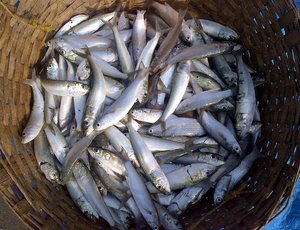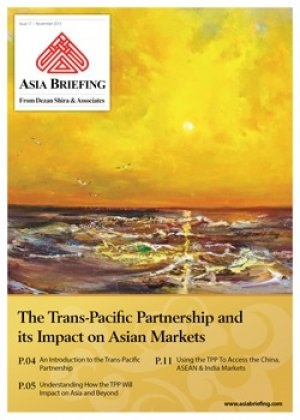Setting Sail in the Sea of Java: An Introduction to Indonesian Aquaculture
 By: Aysha Nesbitt
By: Aysha Nesbitt
As the world’s largest archipelago, Indonesia is among the most important producers of aquaculture globally. In 2001, Indonesia ranked fourth in aquaculture output and has since increased its fishery exports to US $4 billion in 2015. Though Indonesia’s aquaculture industry has begun to make strides, it is still far from realizing its full potential.
In an effort to harness its comparative advantages, the Indonesian government has made monetary commitments to the sustainability of the industry and is working to relax regulations surrounding foreign investment. Upon their election in 2014, both President Joko Widodo and Susi Pudjiastuti, the Minister of Maritime and Fisheries, have been working to establish strategies to promote and expand Indonesia’s fisheries.
The government’s commitment led to the expansion of the fishery sector by 8.37 percent in the third quarter of 2015. With strong government support, Indonesia’s fishery sector will remain competitive with the establishment of the ASEAN Economic Community (AEC) and a strong demand from the United States, Japan and ASEAN members. Investors are also tapping into the sector’s low-tech infrastructure that demands attention from storage supplies, transportation infrastructure, and fast distribution processes.
 RELATED: Pre Investment and Market Entry Advisory from Dezan Shira & Associates
RELATED: Pre Investment and Market Entry Advisory from Dezan Shira & Associates
Opportunities for Investment
Shrimp and tuna are Indonesia’s two largest fishery exports and are expected to grow with the establishment of the ASEAN Economic Community (AEC). The AEC works to boost regional economic integration between the ASEAN members. The Maritime Ministry predicts this agreement will help boost the growth of Indonesia’s captured fish industry by 2.4 percent and the cultivated fish industry by 8.72 percent. This growth is also being attributed to the discontinuation of the suspension on the issuance of fishing permits for those who used ex-foreign owned fishing boats, as Indonesia works to loosen regulation on foreign investors. Demand in the Indonesian fishing sector is strong with the United States accounting for 41 percent of their total fishery exports in 2015, followed by Japan, Europe and ASEAN countries.
Building Infrastructure in Indonesia’s Fishery Sector
Currently, the majority of local fisherman use traditional fishing techniques and equipment, which causes inefficient fishing and reduces the potential of the industry. In order to remain competitive, the Indonesian fishery industry recognizes that they are under pressure to modernize their equipment and techniques. Of the 3000 small-scale fishing ports, the majority do not have property storage facilities for the fish. Therefore, a short delay in processing is enough for a lot of the meat to go bad before it can be distributed. This provides large opportunities for companies in the shipment and transportation industry. Other opportunities for foreign investors lie in the harvesting of seafood, processing, and the sale of fishing devices.
Government Support
The potential of the aquaculture industry is estimated to exceed US $339 billion annually with the growth of costal businesses, biotechnology and fisheries. The government’s commitment of US $1.9 billion to the improvement of the sector demonstrates strong government support in the hopes of attracting foreign investors.
The Indonesian government has also pledged to create 24 ports, maritime highways and modern fishing ships in order to reduce logistics costs. They have also enlisted the help of foreign companies to help modernize the aquaculture sector. Aquaculture, including the rearing of fish, process of fishing products, and manufacturing of devices is open to foreign investors who have partnerships with local players. Norway and China are two countries that have made investments into these sectors. Depending on the industry, foreign investors can expect a 5 percent reduction on their corporate income tax for the first six years.
 RELATED: The ASEAN Economic Community and What it Means for Intellectual Property
RELATED: The ASEAN Economic Community and What it Means for Intellectual Property
Meeting Challenges Head On
Though the industry is opening up to foreign investment, investors must be wary of the heavy regulation surrounding their involvement in capture fishing operations or fishing of specific species due to the FDI restrictions in place. However, all global players are open to participate in any aquaculture operations that includes the rearing of fish, process of fishing products, or manufacturing of fishing devices, provided they have local partnerships.
For first time investors, Indonesia can prove to be a tricky market to navigate. In order to take full advantage of the growing industry, it is recommended to enlist the help of professional service firms with region-wide operations. Dezan Shira & Associates provides foreign direct investment advisory services as well as tax advisory and compliance to multinationals investing in China, India, Hong Kong and ASEAN.
|
Asia Briefing Ltd. is a subsidiary of Dezan Shira & Associates. Dezan Shira is a specialist foreign direct investment practice, providing corporate establishment, business advisory, tax advisory and compliance, accounting, payroll, due diligence and financial review services to multinationals investing in China, Hong Kong, India, Vietnam, Singapore and the rest of ASEAN. For further information, please email asean@dezshira.com or visit www.dezshira.com. Stay up to date with the latest business and investment trends in Asia by subscribing to our complimentary update service featuring news, commentary and regulatory insight. |
Annual Audit and Compliance in ASEAN
For the first issue of our ASEAN Briefing Magazine, we look at the different audit and compliance regulations of five of the main economies in ASEAN. We firstly focus on the accounting standards, filing processes, and requirements for Indonesia, Malaysia, Thailand and the Philippines. We then provide similar information on Singapore, and offer a closer examination of the city-state’s generous audit exemptions for small-and-medium sized enterprises.
 The Trans-Pacific Partnership and its Impact on Asian Markets
The Trans-Pacific Partnership and its Impact on Asian Markets
The United States backed Trans-Pacific Partnership Agreement (TPP) includes six Asian economies – Australia, Brunei, Japan, Malaysia, Singapore and Vietnam, while Indonesia has expressed a keen willingness to join. However, the agreement’s potential impact will affect many others, not least of all China. In this issue of Asia Briefing magazine, we examine where the TPP agreement stands right now, look at the potential impact of the participating nations, as well as examine how it will affect Asian economies that have not been included.
 An Introduction to Tax Treaties Throughout Asia
An Introduction to Tax Treaties Throughout Asia
In this issue of Asia Briefing Magazine, we take a look at the various types of trade and tax treaties that exist between Asian nations. These include bilateral investment treaties, double tax treaties and free trade agreements – all of which directly affect businesses operating in Asia.








